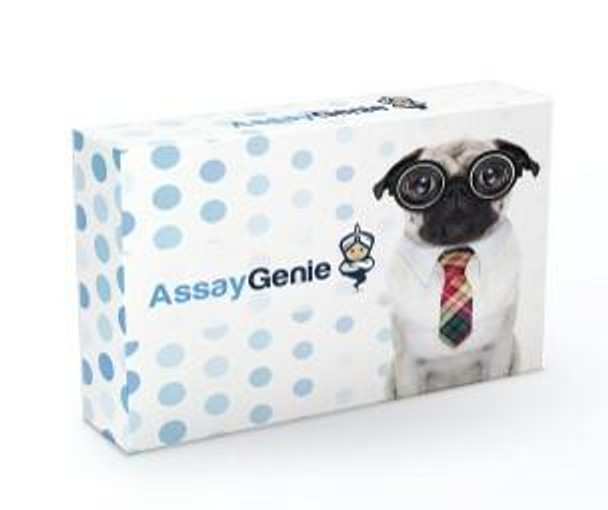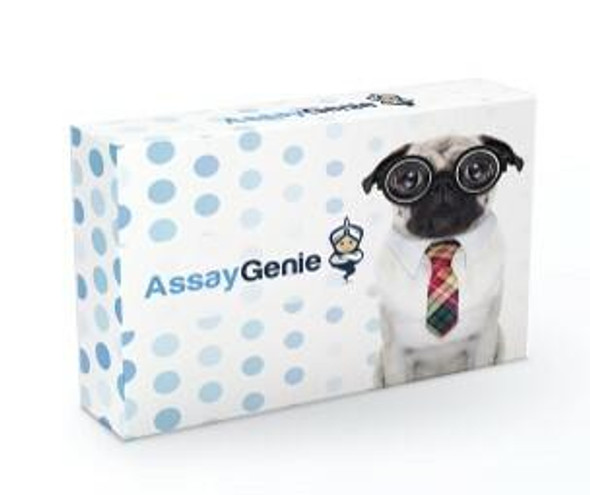Mouse C-Peptide PharmaGenie ELISA Kit (SBRS0048)
- SKU:
- SBRS0048
- Product Type:
- ELISA Kit
- Reactivity:
- Mouse
- Applications:
- ELISA
- ELISA Type:
- Competitive
Description
Mouse C-Peptide PharmaGenie ELISA Kit (SBRS0048)
| Product SKU: | SBRS0048 |
| Size: | 96T |
| Application: | This ELISA kit is designed to detect mouse, and rat C-Peptide. |
| Uniprot: | P01325 |
| Gene ID: | 16333 |
| Gene Names: | INS-1 / INS1 |
| Synonyms: | Insulin-1 [Cleaved into: Insulin-1 B chain Insulin-1 A chain] |
| Target Species: | Mouse, Rat |
| Compatible Sample Types: | Cell Culture Supernatants, Serum |
| Design Principle: | Competition-based |
| Method of Detection: | Colorimetric |
| Quantitative/Semi-Quantitative: | Quantitative |
| Range: | 0.1-1,000 ng/ml |
| Sensitivity: | 0.6 ng/ml |
| Recommended Dilution: | Mouse: 2X, Rat: 2X |
| Storage/Stability: | Standard, Biotinylated C-Peptide peptide, and Positive Control should be stored at -20°C after arrival. Avoid multiple freeze-thaws. The remaining kit components may be stored at 4°C. Opened Microplate Wells and antibody (Item N) may be stored for up to 1 month at 2 to 8°C. Return unused wells to the pouch containing desiccant pack and reseal along entire edge. |
- Pre-Coated 96-well Strip Microplate
- Wash Buffer
- Standard Peptide
- Assay Diluent(s)
- Biotinylated Peptide
- HRP-Streptavidin
- TMB One-Step Substrate
- Stop Solution
- Assay Diagram
- Positive Control Sample
- Capture Antibody
- Technical Manual
Other materials and equipment required:
The Assay Genie Mouse C-Peptide PharmaGenie ELISA Kit (SBRS0048) will require other equipment and materials to carry out the assay. Please see list below for further details.
- Distilled or deionized water
- Precision pipettes to deliver 2 ul to 1 ml volumes
- Adjustable 1-25 ml pipettes for reagent preparation
- 100 ml and 1 liter graduated cylinders
- Tubes to prepare standard and sample dilutions
- Orbital shaker
- Aluminum foil
- Saran Wrap
- Absorbent paper
- Microplate reader capable of measuring absorbance at 450nm
- SigmaPlot software (or other software that can perform four-parameter logistic regression models)
- Prepare all reagents, samples and standards as instructed.
- Add 100 ul detection antibody to each well.
- Incubate 1.5 h at RT or O/N at 4°C.
- Add 100 ul standard or sample to each well.
- Incubate 2.5 h at RT.
- Add 100 ul prepared streptavidin solution.
- Incubate 45 min at RT.
- Add 100 ul TMB One-Step Substrate Reagent to each well.
- Incubate 30 min at RT.
- Add 50 ul Stop Solution to each well.
- Read plate at 450 nm immediately.
C-Peptide is a 31-amino acid single-chain peptide that is made when proinsulin is split into insulin and C-Peptide. They split before proinsulin is released from endocytic vesicles within the pancreas-one C-Peptide for each insulin molecule. C-Peptide is the middle segment of proinsulin that is between the N-terminal B-chain (30 amino acids) and the C-terminal A-chain (21 amino acids). Unlike insulin, C-Peptide has no known physiological function. Due to the fact that C-Peptide has a 2-to-5-time longer half-life than insulin, there are higher concentrations of C-Peptide than insulin in the peripheral circulation. Therefore, plasma C-Peptide concentrations may reflect pancreatic insulin secretion more reliably than the level of insulin itself. C-Peptide is cleared from the body by the kidney, and, unlike insulin, urine concentrations are 20 - 50 times higher than in plasma. Unlike plasma insulin levels, which fluctuate in response to meals, measurement of the 24-hour urinary excretion of C-Peptide provides a useful monitor of average beta cell insulin secretion. The level of C-Peptide has been used to assess the following clinical applications: to assess the residual beta cell function in patients treated with insulin and to distinguish between types 1 and 2 diabetes. Of particular interest is its use to indicate the need for progression to insulin therapy in type 2 diabetes. The diagnosis of factitious hypoglycemia. The surreptitious administration of insulin causes high insulin levels in the absence of elevated C-Peptide concentrations. Insulinoma diagnosis, especially in patients treated with insulin. C-Peptide measurement is used in insulin suppression tests in euglycemic patients with suspected insulinoma. Elevated C-Peptide levels in this test are indicative of insulinoma. As a marker for residual pancreatic tissue after pancreatectomy. In the case of insulinoma, C-Peptide measurement may be used to detect metastasis and the response to therapy. It may also be used to monitor the progress of pancreas or islet cell transplantation









